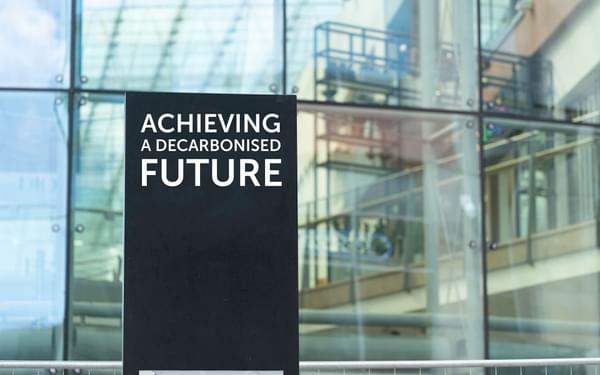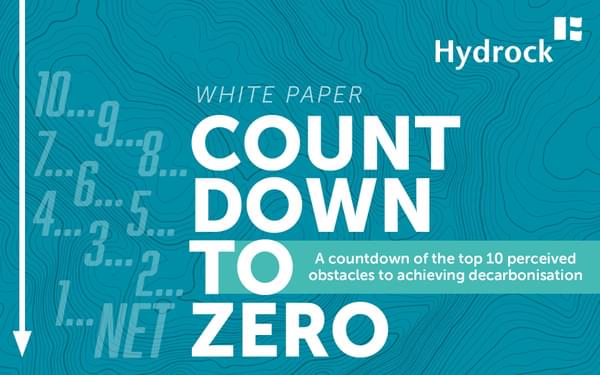Back to Articles
Understanding TCFD: The new landscape of sustainability reporting
Sadaf Askari \ 11th Jan 2024
Task Force on Climate-Related Financial Disclosures (TCFD) is a reporting framework encouraging ever-increasing transparency from companies on the potential impact of climate change on their businesses. That makes the disclosures critical to the reputational standing of organisations, and influences their ability to secure long-term investment.
All large UK companies with over 500 employees and £500m in turnover must report.
It's a real mark of an organisation's ESG credentials, and requires full disclosure of the physical and transitional — financial and reputational — climate risks facing these businesses.
Unlocking value: Why TCFD reporting matters for businesses
Formed by the Financial Stability Board (FSB) and launched in 2017, the purpose of the TCFD is to examine the risks and impacts of climate change on businesses in a financial stability context, on an international level.
It enables companies to provide consistent climate-related financial risk reporting which is valuable information to investors, insurers and other stakeholders, helping them make sustainable choices on which organisations they support.
It shines a light on how organisations are understanding the physical and transitional risks they face and how they are responding and adapting to climate change.
Four pillars of climate-resilient reporting explained
TCFD focuses on four areas:
- Governance
- Strategy
- Risk management
- Metrics and targets
“TCFD brings greater accountability and visibility to the climate resilience of organisations and their real estate.”
Sadaf Askari, Associate Director, Hydrock
Governance
A reporting organisation must disclose how its leadership board has oversight of, and manages the assessment and impacts of climate-related risks and opportunities to the business.
Strategy
The company must disclose its climate-related risks and opportunities (near, medium and long-term), and the potential impacts they have on its business, strategy, financial planning and corporate governance.
The company must also describe its resilience in the face of different climate scenarios, e.g., a 2°C or lower climate scenario analysis.
Risk management
The company must disclose its processes for identifying, assessing and managing climate-related risks, and how these processes are integrated into its overall risk management processes and strategy.
Metrics and targets
A reporting organisation must disclose the metrics and targets it uses to measure success in countering climate-related risks and seizing climate-related opportunities.
The company must also disclose its transition plan including actions and activities that would enable net-zero emissions by 2050. This includes the disclosure of metrics and targets relative to three GHG emissions categories, or scopes:
- Scope 1 emissions: resulting directly from operations owned or controlled by a reporting organisation.
- Scope 2 emissions: associated with the generation of purchased energy, such as electricity, heat, or steam. These are indirect emissions but can be owned and controlled directly by the reporting organisation.
- Scope 3 emissions: those that organisations don’t control directly but occur as a result of their operations across their value chain.
The reporting deadline is 30th of June each year for companies who qualify, or wish to voluntarily publish a TCFD report.
The future of TCFD reporting: Evolving standards and the rise of ISSB
Reporting standards are maturing all the time, and in the case of TCFD it will be subsumed in 2024 into new international reporting standards developed by the International Sustainability Standards Board (ISSB).
The ISSB was formed in 2021 to develop global standards for sustainability-related disclosures to help aid investors and potential stakeholders to make responsible capital allocation decisions.
However, with its exclusive focus on climate risk to business, and the governance, strategies and metrics to demonstrate both awareness of risk, and adaptation, the principles of TCFD reporting will remain central to these new international standards.
The ISSB's new frameworks are the International Financial Reporting Standards S1 (IFRS S1) which focuses on sustainability-related financial information, and the IFRS S2 which is focused on climate-related disclosures.
The ISSB strives to consolidate and improve upon already-implemented international reporting directives such as the TCFD so that companies can align their disclosures to one global reporting framework instead of tracking multiple reporting guidelines.
The key element of both reporting frameworks is the risk assessment process through scenario planning. The aim is to encourage the use of scenario planning in strategic planning to increase an organisation's resilience to climate related risks and opportunities.
Other frameworks cover similar requirements, but flex into different areas. For example, the Corporate Sustainability Reporting Directive (CSRD) covers all ESG issues and goes beyond TCFD as it requires companies to disclose additional information on their sustainability risks and opportunities.
The UK is also poised to announce standards for company sustainability disclosures in July 2024 under the UK Sustainability Disclosure Standards (UK SDS). These are based on the IFRS standards.
Future-proof your business: Climate risk mitigation and growth with Hydrock
We help your organisation understand why they need to report under TCFD and the emerging ISSB standards.
We help you understand the climate risks to your business, how to mitigate the risks, measure change, and adapt for future sustained success.
The benefits include:
- Responding to financial risk.
- Creating a risk management framework for your business.
- Increasing transparency for investors.
- Test your organisation's resilience across a range of hypothetical scenarios, providing the tools you need to make informed decisions in a rapidly changing world.
- Developing an achievable net zero transition plan.
- Embedding sustainability in your corporate culture.
- Demonstrating to investors and lenders that your company’s climate-related risks have been appropriately assessed, potentially leading to easier or better access to capital.
- Helping investors to understand portfolio risk by designing an investment strategy that avoids climate risks, and improves the due diligence process to screen out, or accurately price, climate-risk adverse investments.
We will help you fulfil your disclosure requirements and go beyond in driving sustainable growth.















